A Brief History of Western Cinema By Douglas


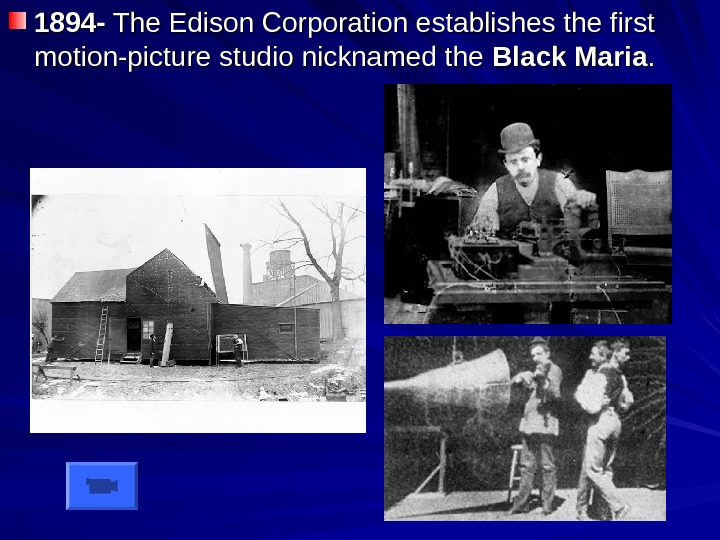

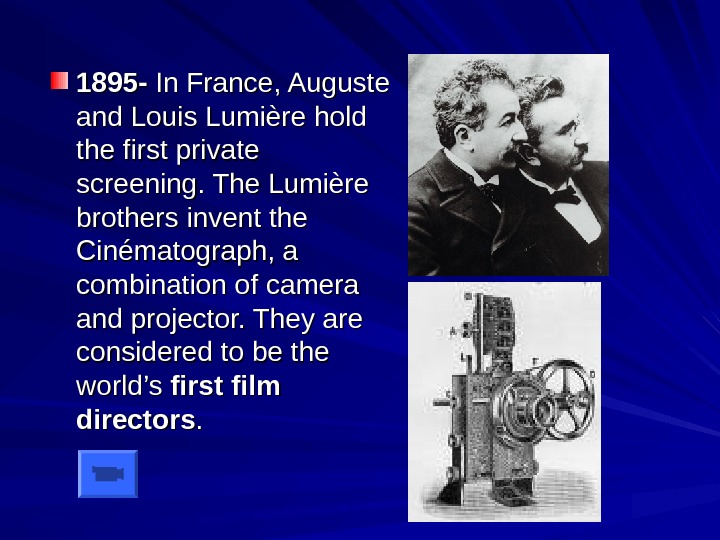





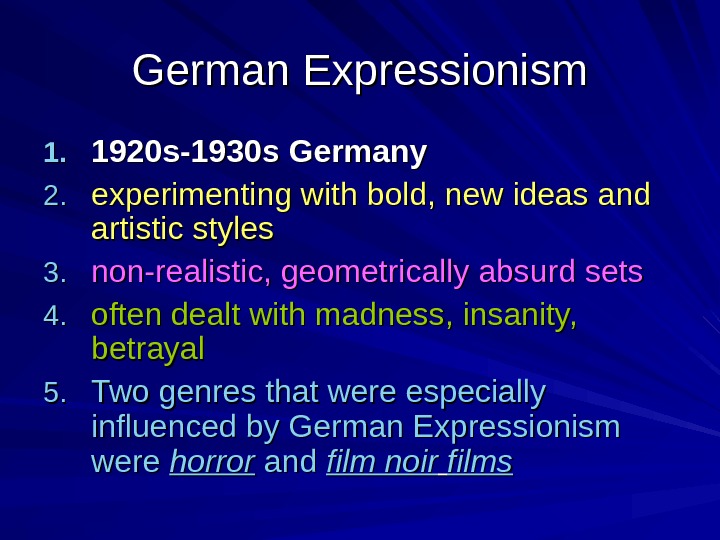












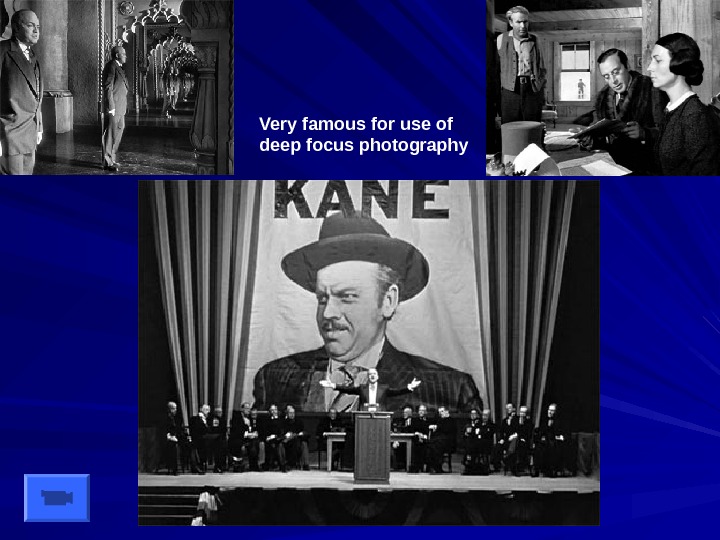



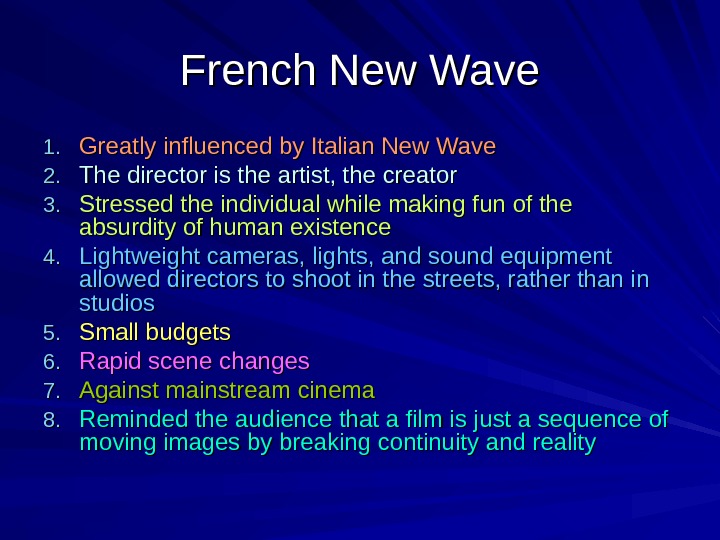








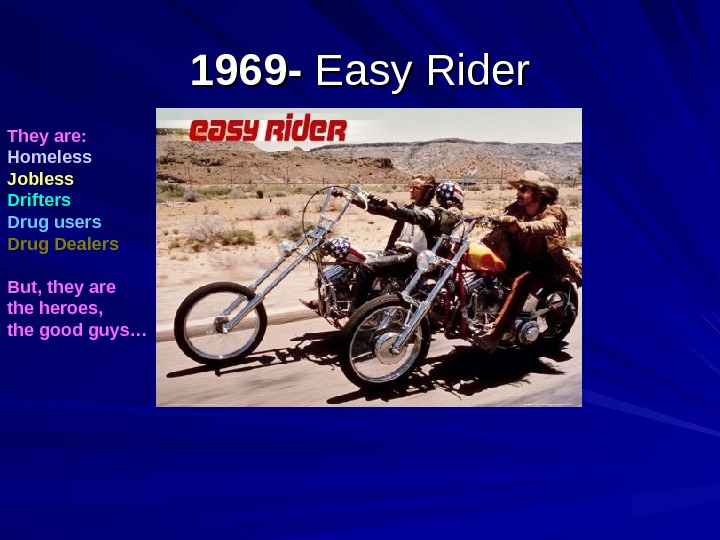


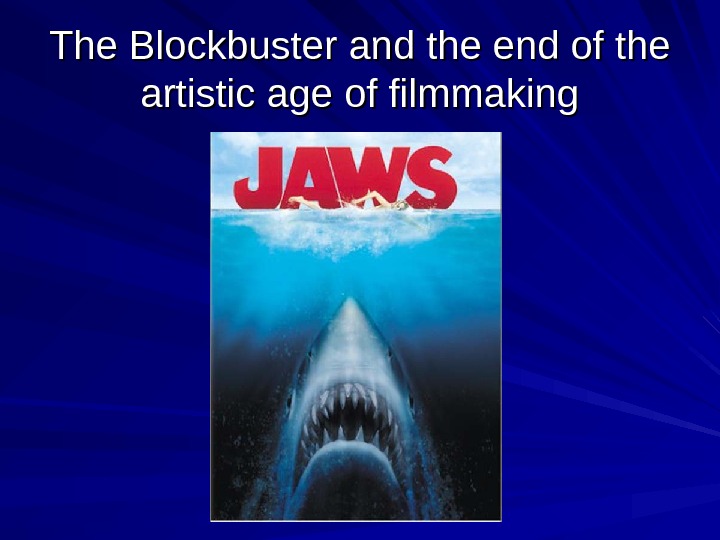



- Размер: 6.5 Mегабайта
- Количество слайдов: 43
Описание презентации A Brief History of Western Cinema By Douglas по слайдам
 A Brief History of Western Cinema By Douglas Pensak
A Brief History of Western Cinema By Douglas Pensak
 Early Invention- Thomas Edison 1889 — Thomas Alva Edison builds the first motion-picture camera and names it the Kinetoscope.
Early Invention- Thomas Edison 1889 — Thomas Alva Edison builds the first motion-picture camera and names it the Kinetoscope.
 1894 — The Edison Corporation establishes the first motion-picture studio nicknamed the Black Maria. .
1894 — The Edison Corporation establishes the first motion-picture studio nicknamed the Black Maria. .
 The Black Maria
The Black Maria
 1895 — In France, Auguste and Louis Lumière hold the first private screening. The Lumière brothers invent the Cinématograph, a combination of camera and projector. They are considered to be the world’s first film directors. .
1895 — In France, Auguste and Louis Lumière hold the first private screening. The Lumière brothers invent the Cinématograph, a combination of camera and projector. They are considered to be the world’s first film directors. .
 A Trip to the Moon France, 1902 — the screen’s first science fiction story was a created by French director and magician Georges Melies (1861 -1938) in this version of the Jules Verne story.
A Trip to the Moon France, 1902 — the screen’s first science fiction story was a created by French director and magician Georges Melies (1861 -1938) in this version of the Jules Verne story.
 Movies and Profit 1905 — Nickelodeons flourish for ten years making moving pictures popular with the public
Movies and Profit 1905 — Nickelodeons flourish for ten years making moving pictures popular with the public
 1914 — In his second big-screen appearance, Charlie Chaplin plays the Little Tramp, his most famous character. He is the first real superstar.
1914 — In his second big-screen appearance, Charlie Chaplin plays the Little Tramp, his most famous character. He is the first real superstar.
 The Birth of a Nation 1915 — D. W. Griffith’s technically brilliant Civil War epic, introduces the narrative , , close-up , , the flashback and other new film making styles. First long film
The Birth of a Nation 1915 — D. W. Griffith’s technically brilliant Civil War epic, introduces the narrative , , close-up , , the flashback and other new film making styles. First long film
 Battleship Potemkin 1925 — Sergei Eisenstein makes, a revolutionary portrait of mutiny aboard a battleship. In the hands of Eisenstein, montage is raised to the highest structural role in filmmaking.
Battleship Potemkin 1925 — Sergei Eisenstein makes, a revolutionary portrait of mutiny aboard a battleship. In the hands of Eisenstein, montage is raised to the highest structural role in filmmaking.
 German Expressionism 1. 1. 1920 s-1930 s Germany 2. 2. experimenting with bold, new ideas and artistic styles 3. 3. non-realistic, geometrically absurd sets 4. 4. often dealt with madness, insanity, betrayal 5. 5. Two genres that were especially influenced by German Expressionism were horror and film noir films
German Expressionism 1. 1. 1920 s-1930 s Germany 2. 2. experimenting with bold, new ideas and artistic styles 3. 3. non-realistic, geometrically absurd sets 4. 4. often dealt with madness, insanity, betrayal 5. 5. Two genres that were especially influenced by German Expressionism were horror and film noir films
 German Expressionism Metropolis Nosferatu
German Expressionism Metropolis Nosferatu
 1927 — Popular vaudevillian Al Jolson astounds audiences with his nightclub act in in The Jazz Singer , , the first feature-length talking film.
1927 — Popular vaudevillian Al Jolson astounds audiences with his nightclub act in in The Jazz Singer , , the first feature-length talking film.
 Mickey Mouse 1928 — Walt Disney introduces in Steamboat Willie, the first cartoons with sound and Mickey Mouse. 1928 — The Academy Awards are handed out for the first time. Wings wins Best Picture.
Mickey Mouse 1928 — Walt Disney introduces in Steamboat Willie, the first cartoons with sound and Mickey Mouse. 1928 — The Academy Awards are handed out for the first time. Wings wins Best Picture.
 Violence and Sex!
Violence and Sex!
 Hays Code 1933 — As head of the Motion Picture Producers and Distributors of America, William Hays establishes a code of decency that outlines what is acceptable in films. William Hays
Hays Code 1933 — As head of the Motion Picture Producers and Distributors of America, William Hays establishes a code of decency that outlines what is acceptable in films. William Hays
 Hays Code 1. 1. No movie shall lower the moral standards of those who see it. No sympathy for criminals. 2. 2. No law shall be ridiculed, nor shall sympathy be created for its violation. 3. 3. No nudity or sexy dances 4. 4. No homosexuality or sexual diseases 5. 5. No ridicule of religion 6. 6. No depiction of illegal drug use 7. 7. No methods of crime (e. g. safe-cracking, arson, smuggling) can be shown 8. 8. No curse words or offensive phrases. 9. 9. Murder scenes must be filmed in a way that discourage imitations in real life. Brutal killings could not be shown in detail. 10. No adultery
Hays Code 1. 1. No movie shall lower the moral standards of those who see it. No sympathy for criminals. 2. 2. No law shall be ridiculed, nor shall sympathy be created for its violation. 3. 3. No nudity or sexy dances 4. 4. No homosexuality or sexual diseases 5. 5. No ridicule of religion 6. 6. No depiction of illegal drug use 7. 7. No methods of crime (e. g. safe-cracking, arson, smuggling) can be shown 8. 8. No curse words or offensive phrases. 9. 9. Murder scenes must be filmed in a way that discourage imitations in real life. Brutal killings could not be shown in detail. 10. No adultery
 Technicolor The most widely used color motion picture process in Hollywood from up to 1952. Technicolor became known and celebrated for its hyper-realistic, saturated levels of color, and was often used for filming musicals.
Technicolor The most widely used color motion picture process in Hollywood from up to 1952. Technicolor became known and celebrated for its hyper-realistic, saturated levels of color, and was often used for filming musicals.
 Becky Sharp 1935 — Audiences impressed by three-color system Technicolor system in Becky Sharp.
Becky Sharp 1935 — Audiences impressed by three-color system Technicolor system in Becky Sharp.
 Snow White and the Seven Dwarfs in Technicolor 1937 — Walt Disney’s first full-length color animated feature, Snow White and the Seven Dwarfs, hits theaters and becomes an instant classic.
Snow White and the Seven Dwarfs in Technicolor 1937 — Walt Disney’s first full-length color animated feature, Snow White and the Seven Dwarfs, hits theaters and becomes an instant classic.
 Gone with the Wind in Technicolor 1939 — Gone with the Wind grosses $192 million, making it one of the most profitable films of all time. It’s also one of the longest films at 231 minutes. Color, Famous book, EPIC !!
Gone with the Wind in Technicolor 1939 — Gone with the Wind grosses $192 million, making it one of the most profitable films of all time. It’s also one of the longest films at 231 minutes. Color, Famous book, EPIC !!
 Wizard of Oz in Technicolor-
Wizard of Oz in Technicolor-
 Citizen Kane 1941 — Orson Welles made using newly developed film stocks and a wider, faster lens. Welles pushes the boundaries of montage and mise-en-scène , as well as sound , redefining the medium; still considered to be the greatest film ever made. Very famous for use of deep focus photography
Citizen Kane 1941 — Orson Welles made using newly developed film stocks and a wider, faster lens. Welles pushes the boundaries of montage and mise-en-scène , as well as sound , redefining the medium; still considered to be the greatest film ever made. Very famous for use of deep focus photography
 Very famous for use of deep focus photography
Very famous for use of deep focus photography
 Film Wave- Italian Neorealism: 1. 1. A new democratic spirit, that portrayed ordinary people 2. 2. A compassionate story and a refusal to make moral judgments 3. 3. A look at Italy’s Fascist past and the effect of WWII 4. 4. An emphasis on emotions rather than ideas 5. 5. No neatly plotted stories but instead loose story structures 6. 6. A documentary visual style 7. 7. The use of real locations over fake studio locations 8. 8. The use of Non-professional actors 9. 9. The use of conversational speech, not literary dialogue 10. No artificial editing, camerawork or lighting but rather a simple style of filmmaking
Film Wave- Italian Neorealism: 1. 1. A new democratic spirit, that portrayed ordinary people 2. 2. A compassionate story and a refusal to make moral judgments 3. 3. A look at Italy’s Fascist past and the effect of WWII 4. 4. An emphasis on emotions rather than ideas 5. 5. No neatly plotted stories but instead loose story structures 6. 6. A documentary visual style 7. 7. The use of real locations over fake studio locations 8. 8. The use of Non-professional actors 9. 9. The use of conversational speech, not literary dialogue 10. No artificial editing, camerawork or lighting but rather a simple style of filmmaking
 The Bicycle Thief
The Bicycle Thief
 Italian Neorealism 1946 — Roberto Rossellini’s Italian Neorealist film Open City presents an alternative to Hollywood with its use of street cinematography, grainy black-and-white film and untrained actors, lyrically capturing the despair and confusion of post-World War II Europe.
Italian Neorealism 1946 — Roberto Rossellini’s Italian Neorealist film Open City presents an alternative to Hollywood with its use of street cinematography, grainy black-and-white film and untrained actors, lyrically capturing the despair and confusion of post-World War II Europe.
 French New Wave 1. 1. Greatly influenced by Italian New Wave 2. 2. The director is the artist, the creator 3. 3. Stressed the individual while making fun of the absurdity of human existence 4. 4. Lightweight cameras, lights, and sound equipment allowed directors to shoot in the streets, rather than in studios 5. 5. Small budgets 6. 6. Rapid scene changes 7. 7. Against mainstream cinema 8. 8. Reminded the audience that a film is just a sequence of moving images by breaking continuity and reality
French New Wave 1. 1. Greatly influenced by Italian New Wave 2. 2. The director is the artist, the creator 3. 3. Stressed the individual while making fun of the absurdity of human existence 4. 4. Lightweight cameras, lights, and sound equipment allowed directors to shoot in the streets, rather than in studios 5. 5. Small budgets 6. 6. Rapid scene changes 7. 7. Against mainstream cinema 8. 8. Reminded the audience that a film is just a sequence of moving images by breaking continuity and reality
 French New Wave 1959 — Jean-Luc Godard’s Breathless, typical of the French New Wave uses the jump cut , the hand-held camera and loose, improvised direction. It costs $90, 000 in just four weeks. His use of jump cut’s assault the normal style of editing and the presumption of continuity and time opens new possibilities for filmmakers.
French New Wave 1959 — Jean-Luc Godard’s Breathless, typical of the French New Wave uses the jump cut , the hand-held camera and loose, improvised direction. It costs $90, 000 in just four weeks. His use of jump cut’s assault the normal style of editing and the presumption of continuity and time opens new possibilities for filmmakers.
 Psycho 1960 — Alfred Hitchcock terrifies audiences with Psycho, the first movie about a serial killer as well as one of the most memorable psychological thrillers of all time.
Psycho 1960 — Alfred Hitchcock terrifies audiences with Psycho, the first movie about a serial killer as well as one of the most memorable psychological thrillers of all time.
 Losing Money! 1964 — Box office sales continue to spiral downward as a disillusioned country loses interest in Elvis, Rock Hudson and Sandra Dee movies.
Losing Money! 1964 — Box office sales continue to spiral downward as a disillusioned country loses interest in Elvis, Rock Hudson and Sandra Dee movies.
 The Counter Culture
The Counter Culture
 The Counter Culture Against western religion (Christianity) Feelings of sexual and moral repression Against government control Information should be free All people should be free Against the Vietnam war
The Counter Culture Against western religion (Christianity) Feelings of sexual and moral repression Against government control Information should be free All people should be free Against the Vietnam war
 New Artistic Freedom and the Death of the Hays Code 1967 — Bonnie and Clyde 1967 — The Graduate 1968 — The motion picture rating system debuts with G, PG, R and X. 1969 — Easy Rider 1969 — Midnight Cowboy wins the Best Picture Oscar, the first and only time an X-rated movie received the honor.
New Artistic Freedom and the Death of the Hays Code 1967 — Bonnie and Clyde 1967 — The Graduate 1968 — The motion picture rating system debuts with G, PG, R and X. 1969 — Easy Rider 1969 — Midnight Cowboy wins the Best Picture Oscar, the first and only time an X-rated movie received the honor.
 1967 — Bonnie and Clyde are: Criminals Bank Robbers Dangerous Killers But, they are the heroes, the good guys…
1967 — Bonnie and Clyde are: Criminals Bank Robbers Dangerous Killers But, they are the heroes, the good guys…
 1967 — The Graduate He is: Unhappy Lost Confused Sexually Active But, he is the good guy
1967 — The Graduate He is: Unhappy Lost Confused Sexually Active But, he is the good guy
 1969 — Easy Rider They are: Homeless Jobless Drifters Drug users Drug Dealers But, they are the heroes, the good guys…
1969 — Easy Rider They are: Homeless Jobless Drifters Drug users Drug Dealers But, they are the heroes, the good guys…
 1969 — Midnight Cowboy They are: Homeless Penniless Thieves Drug users Hustlers The lowest members of society But, they are the heroes, the good guys…
1969 — Midnight Cowboy They are: Homeless Penniless Thieves Drug users Hustlers The lowest members of society But, they are the heroes, the good guys…
 Counter Culture Movies With the combination of talent and artistic freedom, for the next 6 years Hollywood produces the most groundbreaking, influential films of all time.
Counter Culture Movies With the combination of talent and artistic freedom, for the next 6 years Hollywood produces the most groundbreaking, influential films of all time.
 The Blockbuster and the end of the artistic age of filmmaking
The Blockbuster and the end of the artistic age of filmmaking
 Close Encounters of the Third Kind
Close Encounters of the Third Kind

 The Blockbuster 1977 — Star Wars hits theaters—for the first time—and will go on to be the second highest-grossing film of all time. The franchise blockbuster is upon us.
The Blockbuster 1977 — Star Wars hits theaters—for the first time—and will go on to be the second highest-grossing film of all time. The franchise blockbuster is upon us.
